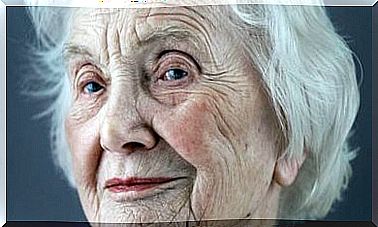The Triple Anxiety Response System

What aspects would you look at to identify anxiety? Many people (especially those who have never had it), consider that it is a subjective and private event; that is, it is only related to what the individual feels. This same belief is what sometimes prevents us from detecting that we are suffering from this problem. That is why it is important that you know the triple anxiety response system.
There are those who are aware that certain physical manifestations (such as shortness of breath) can be a sign of anxiety. However, if this symptom is not accompanied by the previously named subjective sensation, they directly rule out that anxiety is the problem. For the same reason, they begin to look for an organic cause that they almost never find.
In reality, anxiety (like the rest of emotions) manifests itself through several aspects and it is necessary to analyze each of them to reach a conclusion about what is happening. This is what the well-known triple response system model postulates.

What is the triple anxiety response system?
The triple response system model (also known as the Lang model in honor of its author) was postulated by psychologist Peter Lang in 1968. It arose from his observations on a group of phobic patients he was treating. At the time, it was accepted that emotions had a one-dimensional manifestation: that is, that cognitive, physiological and behavioral measures correlated with each other and changed at the same time.
Lang discovered then that each of these three slopes followed its own course and did not necessarily adjust to changes in the others. Thus, anxiety can manifest itself through thoughts, bodily sensations and behaviors, but these three systems work independently. The intensity, frequency, duration or moment of appearance of each of these manifestations may be different.
Cognitive
The cognitive response system refers to the thoughts that accompany anxiety and the feelings that derive from them. Thus, it includes the following elements:
- Mental images of possible catastrophic events.
- Limiting thoughts and little adjusted to reality.
- Negative beliefs about yourself.
- Fear, worry, insecurity.
- Fear of losing control
- Concentration and decision-making difficulties.
Physiological
This aspect includes all the physical symptoms and bodily sensations that appear as a result of anxiety. These are mediated by the autonomic nervous system and are manifested, among others, in the following experiences:
- Tachycardia.
- Sweating
- Muscle tension.
- Headaches or digestive problems.
- Difficulty breathing.
Behavioral
The motor or behavioral response encompasses the actions or movements that are carried out when anxiety is experienced. These can be direct (for example tics, stuttering, nail biting or moving the leg incessantly); but they can also be indirect (avoiding or escaping from certain situations to avoid the discomfort they cause).
The behavioral response also includes all the harmful behaviors that people with anxiety use to alleviate or manage their distress. These can range from substance abuse (such as tobacco, alcohol, or other drugs) to ingesting large amounts of food.

The triple response system helps us detect and address anxiety
All of the above implies that anxiety goes far beyond a mere subjective experience, since it also affects the physical body and the behavior of the person suffering from it. But, in addition, it alerts us that these components can be presented independently.
That is, a person may feel seemingly calm and manifest anxiety through chest tightness or digestive problems. And, in the same way, someone can be physically fine and yet binge on food that responds to anxiety.
To identify this emotion (and any other) it is essential to evaluate the three systems separately, since the symptoms may appear unevenly in each of them. In addition, this analysis of the triple response system also helps to make the psychological intervention much more complete and, therefore, more effective. Targeting thoughts, bodily sensations, and behavior in a specific way increases the success of the intervention.









